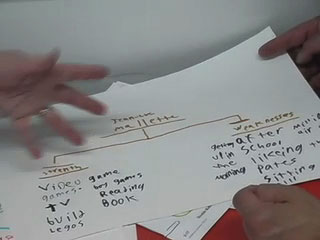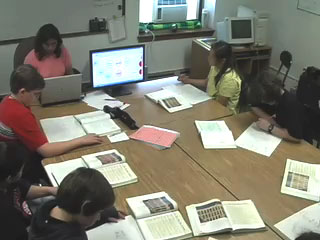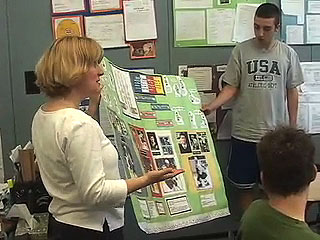



Learning Prep: Student Performance
West Newton, Massachusetts
Since September 2002, student performance at this school has improved as demonstrated by an increase in vocabulary acquisition, concept attainment, an ability to make connections, and an ability to establish relationships (see Appendix C). The students' overall learning process has been facilitated by the use of these visual tools (see Appendix B). Using Thinking Maps, students have able to develop cognition and comprehension strategies in order that they may bridge the gap between current and projected abilities. As evidenced by the 2002 MACS Retest scores, Thinking Maps have proven to be an integral tool for students to retain and retrieve content, attain concepts, and forge connections. Teachers' fluency with Thinking Maps is tracked as well, to ensure that students are receiving the maximum benefit possible (see Appendix F).
In lieu of extensive published research, and in addition to increased test scores as reported by many'districts, one also could interpret the fact that over 3,000 schools worldwide implement Thinking Maps into their curriculum as evidence that they must work to some degree (B. Singer, personal communication, December 18, 2002).

An intereview with Susan Powers, Vice Principal at Learning Prep.
![]() Watch the video clip in Quicktime (12:31)
Watch the video clip in Quicktime (12:31)
Reading is elemental for learning; one must be able to master comprehension in order to facilitate knowledge acquisition. Rote teaching methods have proven to be only minimally effective, as students typically do not retain much of what they have read and incorrectly decode the material. This dilemma necessitates that educators change their teaching methods to include strategies that address the development of reading comprehension skills, including retention and retrieval, thus helping students become independent learners.

In class with Marla and students using Thinking Maps software and doing writing.
![]() Watch the video clip in Quicktime (7:52)
Watch the video clip in Quicktime (7:52)
The past thirty years have yielded a significant amount of research supporting the use of graphic organizers with all student populations to assist with reading comprehension and decoding text structure. Research has demonstrated that visual tools are a viable instructional strategy that enables students to attain concepts and establish connections requisite for proficiency, and that they are an integral component of successful teachers' repertoires of instructional methodologies.

In class with Colleen and students sharing Thinking Maps with writing, presentations, and more.
![]() Watch the video clip in Quicktime (7:52)
Watch the video clip in Quicktime (7:52)
Whichever strategy is utilized, one factor remains constant, the importance of using some kind of strategy. As students rarely are able to grasp key concepts and understand content independently, strategies can prove to be invaluable tools for helping students construct meaning from text. When educators are armed with such tools, research corroborates that students, in fact, can make substantial gains in reading comprehension.
Download the Improving Reading Comprehension Through Visual Tools Thesis by Cynthia Manning
- Thesis Summary (pdf file)
- Complete Thesis (pdf file)